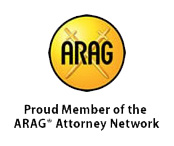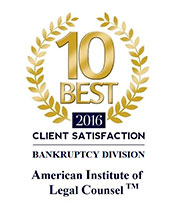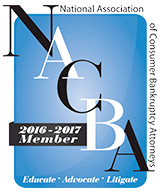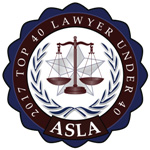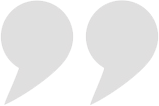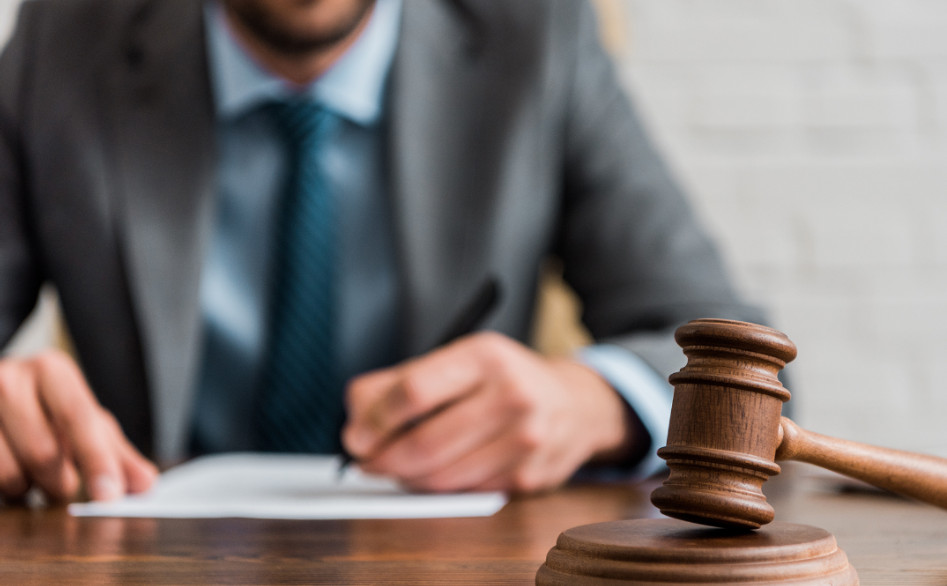Auto accidents can occur unexpectedly. To make things worse, the incident can result in you suffering long-term consequences in your life. Some of the problems you would be dealing with include spinal cord, neck, and brain injuries. Because of the city's growing population and the high-density traffic environment, the chances are higher in Sacramento.
In this context, the Sacramento Personal Injury Lawyer Law Firm is at the frontline to assist you in getting the recompense that you are legally entitled to for the injuries suffered. We are open to assisting you with any personal injury case in and around Sacramento, California. The majority of auto accident lawsuits are a result of the negligence of one party or both individuals. The offenders who are responsible for causing such injuries owe it to their victims to compensate them for any damage sustained. A successful case is often achievable with the help of an experienced personal injury lawyer who specializes in car accidents.
An Overview of California Personal Injury Laws
When you leave your house to run some errands, you don't anticipate needing to consult with a personal injury attorney at the end of the day. No one anticipates danger, even if there are lots of possible risks on the roadways that they must travel daily. On the highways, there are reckless drivers, broken steps, unleashed dogs, and faulty items. People have to deal with risky behavior and dangerous barriers in public and private places daily, which is why, according to the National Center for Health Statistics, thirty-two million people in the United States received treatment for personal injuries sustained in 2012.
Although not all personal injuries are caused by another person's carelessness, willful conduct, or negligence, the majority of the serious injuries seen so far have been caused by the wrongdoings of individuals, firms, and government agencies. The California Personal Injury Law has developed a model that holds people responsible for accidents and fatalities caused by their negligence, intentional conduct, or inattentiveness to others.
If there's a legitimate reason to consider the perpetrator liable for the pecuniary and non-pecuniary damages incurred by a car accident victim, the financial obligation would be placed on them. In most circumstances, the liability will be grounded in negligence. In this context, negligence refers to an individual's inability to take the necessary precautions to prevent foreseeable injury. The majority of personal injury claims are predicated on unintentional injuries, although purposeful injuries such as those sustained during sexual or physical abuse could also be used to hold the wrongdoer accountable.
Strict liability could also be applied to hold someone financially liable for the harm inflicted on another person. This normally applies in special contexts where the law allows the blame to be issued on someone who's not guilty. In California, a personal injury lawsuit must prove that the perpetrator's actions caused the victim to suffer emotional, physical, and/or financial harm. Any personal injury, such as slipping on a slick floor or getting hit by an intoxicated driver, entitles the victim to compensation for damages such as medical expenses, lost income, diminished earning ability, suffering and pain, as well as loss of one's companionship and care of loved ones, among other things. The accident's adverse effect on the victim's lifestyle, as well as the severe damage, will be assessed.
California Personal Injury and Car Accident Laws
As previously stated, car accidents can lead to physical injuries. If this occurs, it is essential to know how California's laws apply to your injury lawsuit. There are several statutes that you should study and comprehend, such as the following:
California Driving Laws
There are numerous laws that car owners should follow to keep the roads safe. These include, for example:
California VC 21462 requires all drivers to respect and comply with all traffic laws that apply to them unless directed differently by a traffic officer or law enforcer.
California VC 21650 mandates all drivers to always travel on the road's right side, with an exemption for the following situations:
-
When the driver overtakes another motorist who is traveling in the same direction.
-
When the driver places his or her vehicle in an illegal spot to make a turn to the left side.
-
When the road's lane on the right side is under construction or blocked.
-
When traveling on a one-way street with only one direction of traffic.
-
When a road is too narrow.
California VC 21750, 21753, and 21751, respectively, mandate that motorists who are traveling in the same direction must shift to the left side at a safe distance and remain in the overtaking lane until it's safe to return to the right lane. On the other hand, drivers being overtaken should not increase their speeds until other motorists have completely passed them.
VC 21751 imposes restrictions on drivers who overtake on the left side. This could only be executed if the left lane is clear and the overtaking automobile can return to its path without interfering with oncoming traffic.
California VC 21754 allows drivers to pass on their right, but only if the following requirements are met:
-
When a driver who intends to overtake is about to make a turn on the left side. The motorist making the right-hand pass, on the other hand, should do so without deviating from the most frequently used section of the route.
-
When there are 2 or more lanes of traffic on a road, all of which are heading in the same direction.
-
If the motorist is traveling on a one-way route.
-
When traveling on a highway with 2 distinct roadways with traffic limited to one lane on each of the routes.
VC 21706 and 21703 respectively specify that motorists should not drive too close to other motorists on the highway. They should keep a safe and reasonable distance between themselves and other vehicles. Motorists should also examine the distance they need to maintain between themselves and other cars while noting their pace and the hurry of other drivers, as well as the conditions along the route. Any motorist towing his or her vehicle is obligated to maintain a safe distance between themselves and other vehicles so that any vehicle seeking to overtake can do so without putting themselves at risk.
California VC 23123.5 states that motorists shouldn't operate their vehicles while busy on an electronic cellphone. Unless the gadget is designed and set up to be operated with your voice or hands-free. Drivers can, however, utilize their mobile phones to call for aid in an emergency.
Section 21800 specifies that once two automobiles approach a junction at about the same time, the driver on the left should give way to the driver on the right side.
California VC 22107 stipulates that a motorist cannot shift to the left of the road unless it could be done safely and rationally, which would only be possible if the driver has provided the appropriate signal.
According to Section 21802, any driver who is about to enter or cross a roadway from a different location than from another roadway should allow other cars on the road that they plan to cross.
California's VC 21200, cyclists are expected to uphold all traffic laws that apply to car drivers and could face the same penalties as drivers if they do fail to comply.
California Pedestrian Laws
According to California laws VC 21950, a motorist of any vehicle should always halt to give way to a pedestrian crossing the road at an unmarked or marked pedestrian crossing. The same statute provides that when traffic is stopped, no pedestrian is authorized to enter or cross an unmarked or marked pedestrian crossing since this creates an instant risk.
California VC 21456 outlines the control symbols and signs that should be observed and followed by pedestrians. A pedestrian or walk signal signifies that a pedestrian can cross a road in the direction of the control sign. This indicator tells motorists that they must yield to pedestrians. A flashing or steady Wait, Hand or Don't Walk signal indicates that no pedestrian is required to cross the street or road in the direction of the symbol at that time.
Section 21953 states that pedestrians who wish to cross a roadway at a location beside the marked crosswalk must yield to all motorists using that road.
VC 21956 makes it unlawful for any pedestrian that strolls upon or along an adjacent motorway outside any residential or business district. When there are no sidewalks, a pedestrian could only walk on or along the left side of the roadway, or when his or her shoulder is in front of vehicles but from the opposite side.
Section 21952 states that any vehicle must yield to approaching individuals on foot before driving over or upon any sidewalk.
California Motorcycle Laws
In California, certain statutes exclusively apply to motorcycle riders, such as:
VC 27803, which mandates the use of helmets by all motorcyclists and their passengers when on public roads
California VC 25650 and 25650.5 respectively, which requires every motorcycle operating on a roadway in the dark to have at least one, but no more than two, headlights turned on. Every motorcycle built and registered on or after January 1, 1978, must have at least 1 headlight and no more than two. When the motorbike engine starts, the headlights ought to automatically light and stay on for as long as the motorcycle's engine is running.
California's Car Accident Compensation Statutes
California, like many other jurisdictions, has a "tort" or "at fault" structure for auto accident insurance lawsuits. If someone claiming compensation for injuries sustained in an auto accident wants their case to be successful, they must prove liability on the other motorist's part.
Your lawsuit could develop into a full-fledged legal action in addition to the insurance suit. California is renowned as a pure comparative negligence state. If the lawsuit goes to trial, a judge or jury would have to assess the share of the blame for each motorist and then reduce each motorist's fault accordingly.
Types of Damages That Can Be Compensated
Car accident damages are classified as either non-monetary or monetary/economic. Economic damages include costs such as car repairs or replacement, lost wages, present, and future medical bills, as well as any other money-related expense incurred by the victim. Non-monetary losses, on the other hand, include damages that don't require monetary restitution. These include any emotional hardship, suffering, or disfigurement caused by the accident. Below is a catalog of some of the expenses associated with car accidents:
Lost Income
Serious vehicle accidents can keep an individual out of work for an extended period, which is where recompense for lost income comes in. Several individuals suffer injuries that would make it difficult for them to work. If a person has to spend a long time in the hospital, for example, he or she is unable to work due to physiotherapy sessions or because he or she developed mobility issues, they should be compensated for their lost earnings. You'll have to show that the damages you've suffered have hindered or limited your ability to make a living.
Suffering and Pain
These are legally described as mental and/or physical discomfort for which an individual can sue for compensation. In this situation, damages will be determined by the severity of the pain endured, the type of injury suffered, and the likelihood of future discomfort linked with the victim's injury. Pain and misery also cover emotional and mental harm, which can incorporate issues like anxiety and stress.
Loss of Affection or Companionship
Some traumas take away an individual's ability to express his or her emotions to their partners. A few individuals' abilities to participate in consensual intercourse could be impaired. This kind of damage, unlike the others, is contested by the unharmed spouse. It's worth noting that other expenses should be recouped before your partner can reclaim this.
Health-care costs
If you've been in an auto accident, you could suffer from a variety of injuries, ranging from minor scratches and bruises to major traumas including paralysis and lasting impairments. It's important to keep in mind that few injuries don't show symptoms right away. As a result, an injured individual could require extra medical attention in the future. That's why, if you believe you've been harmed, it is critical to seek medical attention as soon as possible following the event. You would have to pay for the following medical expenses:
-
Consultations with physicians and other healthcare providers.
-
Cognitive therapy and physiotherapy if you've sustained an injury to the brain.
-
Fees for ambulance services.
-
In-home services.
-
Accessories like crunches or heat pads.
-
Disfigurement.
-
Permanent disability.
Limitations on Damages That Can Be Claimed
Unlike other jurisdictions, California doesn't have limits on the damages a plaintiff can recover in a personal injury lawsuit. However, you will encounter a few snares along the way that would reduce or even dismiss your car accident compensation lawsuit.
The primary limitation, often known as the Statute of Limitations, is the time constraint for filing any claim. This is the time frame in which a person should register a claim after being injured. According to VC 335.1 of the California Statutes, the car accident victim has 2 years from the date of the incident to initiate a lawsuit. In the case of property damage cases, the victim has 3 years under California VC 338 to submit a legal petition for reimbursement. For cases involving any government agencies, the victim has 6 months to initiate a legal lawsuit as specified in California's VC 911.2.
Furthermore, California provides a special form of limitation for auto accidents, in regards to the statute of limitations, involving a driver who is either uninsured or has no proof of financial responsibility. That's according to California's Prop 213, which was enacted by voters. Under this theory, if a driver doesn't have insurance, recovering non-monetary damages such as pain, emotional anguish, and suffering would be difficult. This is true irrespective of who is at fault for the incident. Financial costs like medical expenditures and lost earnings would still be recoverable so long as the cause is demonstrated.
The final restriction will affect persons who have been in hospitals for a long time due to personal injuries. In such a circumstance, medical negligence damages could have an impact on their livelihood as well. This implies that if a person's car accident injury worsens as a result of medical error, your non-pecuniary damages would be restricted to a maximum of $250,000.
How to Protect Your Legal Rights After Being Involved in an Auto Accident
Car accidents would leave you in a lot of pain, and cause you a lot of anxiety as well as emotional turmoil. Damage to the victim's body and mind can affect his or her decisions as well as confuse their judgment. When you're in such a tough situation, what you do next would have significant and long-term implications on your constitutional rights and also the treatments you receive. Hence it is critical to consult with a professional personal injury lawyer at every stage of the process.
With an expert on your team, you will be able to proceed smoothly and take swift legal measures to guarantee that you receive a just recompense for your damages. Below are a few of the most important steps you can take to protect your claim.
Take Photos and Collect As Much Proof As Possible
Following a car crash, the wounded driver or the individual driving with the injured should obtain information about the other motorist, including the license plate number, insurance details, the motorist's name, and phone number or address. If there were any witnesses there, obtain their contact information as well. Any shattered parts of your vehicle should be kept as evidence. Take pictures of your injuries, the damage to your car, and its relative state if possible. You'll need to take multiple shots of the incident's immediate surroundings.
Grant Permission For Medical Help
When someone is facing a great deal of stress, not to mention the adrenaline rush that comes with being in an accident, it is easy to misjudge the risk of serious injury sustained. In most circumstances, individuals who are in shock don't feel pain right away. Some injuries, once again, do not manifest signs until after some time has elapsed. If paramedics arrive at the scene of the accident and request that you be taken to the hospital, you should give your consent and believe their professional judgment. Even if the injured believes that his or her injuries are minor, they must consult a doctor if they injure their leg or harm their head in the accident.
Be Cautious About What you Mention
When you're in shock, it's simple to make damning claims, especially when interacting with law enforcement. Few of these remarks will be recorded and would be leveraged on you once the time comes to submit your legal lawsuit. Allow your lawyer to make a statement on your account.
Confirm That the Accident's Report is Prepared
The circumstances of an accident, and the individuals involved, are normally documented in an accident report. Even though you believe the personal injuries you sustained were minimal, it's important to keep this documentation. Also, it's essential to notify police officers before leaving the crash scene in any type of vehicle collision since they are responsible for preparing the report. It's acceptable to identify who you believe was responsible for the crash, in your conversation with the police officer.
Find a Personal Injury Attorney Near Me
Car accidents may occur even if you take all precautionary measures while driving a car. Innocent Sacramento residents get hurt daily or, in the worst-case scenario, die in car accidents. If you're hit by an intoxicated driver, a reckless teenager, or an irresponsible motorist who fails to observe traffic rules, you should hold them liable. We at Sacramento Personal Injury Lawyer Law Firm have extensive expertise in managing these lawsuits and obtaining significant compensation for clients in similar situations to yours. Call us at 916-313-4859.

